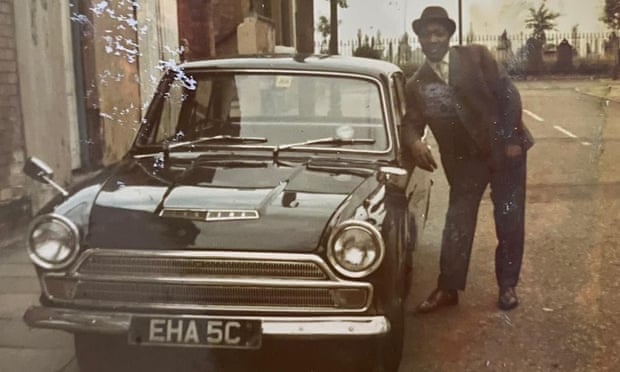Launched on Windrush Day on 22 June 2023, our brand new exhibition with the Bank of England Museum, Pardner Hand: A Caribbean answer to British banking exclusion, explores the Pardner Hand – the collective savings system that followed the Windrush Generation to Britain, which was used by generations of people excluded by the banking system.
The exhibition, which includes an accompanying Smartify audioguide, includes interviews with members of the Windrush Generation, explaining how the Pardner Hand travelled with their ancestors to the West Indies and on to the UK.

Despite coming to Britain’s aid after the Second World War, many Caribbean people were prevented from opening bank accounts and were refused loans or mortgages from commercial banks due to a lack of credit history or being on a low income.
The exhibition also explores how the Pardner Hand system is still flourishing today, and remains an important way for people to save, given the continuing challenges around access to banking.
“Pardner Hand is part of the extraordinary contribution that the Windrush Generation and their descendants have made to life in the UK. We are delighted that they are now sharing their story with us here at the Bank of England Museum.” Jennifer Adam, Curator at the Bank of England Museum
What is the Pardner Hand?
“It’s a family thing. My grandmother is in one, my mother in a different one, and I am in the same one as my sister!”
The Pardner Hand system is a community-run savings partnership, which grew in popularity in Britain in the late 1940s, as many of the Windrush Generation found themselves refused access to the banking system.
It is a type of ROSCA (Rotating Savings and Credit Association) – a model that is used around the world, especially when access to traditional banking and credit services is limited. Across the world, Pardner Hand has many names; ‘Pardna’ is common in Jamaica; in Trinidad it is called ‘sou-sou’, as it sounds like a secret activity (sshh-sshh!); in Indonesia it is known as Arisan and in South America, Tanda.
The Pardner Hand is also a vital piece of African and Caribbean history and culture, which holds deep significance for the Windrush Generation and its descendants. Entirely based on trust among fellow savers, it has proved to be a very effective way of bringing often marginalised communities together.

How does it work?
To start a Pardner Hand, a group of trusted friends agrees to save money together over a set period with each pardner handing their money to the appointed banker for safe keeping.
Each week, one pardner receives a lump sum, made up of the total contributions that week. It can work as a quick interest-free loan for the first people to receive their ‘hands’, or as a savings scheme for those who receive theirs later on.
Members must trust that the Banker will not disappear with all the money or find a reason not to pay out. And word spreads quickly if somebody fails to make their payments, since this affects all the other pardners’ savings as well.
“This exhibition celebrates the entrepreneurial Caribbean community. Pardner Hand helped many people succeed despite being blocked by the system. It helped Caribbean people settle into life in the UK, fund their own businesses and buy their own homes, so they could move out of rented accommodation where many faced the racist, discriminatory attitudes of landlords.” Catherine Ross, Founder and Director, Museumand
Did you know?
Even today, around 1.2 million adults across the UK do not use traditional banking services due to lack of trust in the system, a poor credit score, or being unable to access banking due to language or physical barriers.
Also at the Bank of England Museum is the exhibition Slavery & the Bank which opened in April 2022 and explores the history of transatlantic slavery through its connections with the Bank of England and the wider City of London.
The Pardner Hand exhibition began as a conversation with Museumand about how the Bank of England Museum could explore continuing economic legacies of transatlantic slavery in the UK, not only for the Windrush Generation but up to the present day. It is the first in a series of planned exhibitions at the Bank of England Museum relating to themes of financial exclusion.
The exhibition opens at the Bank of England Museum on 22 June 2022 until June 2024.
To find out more please visit www.bankofengland.co.uk/museum
Pingback: Windrush 75: A round-up of our exhibitions & events – Museumand
Well done young ladies . You have done excellently . Now I shall try my very best to go and visit the exhibition.
I am so proud of you. God’s blessings . Do keep up the wonderfully good work.